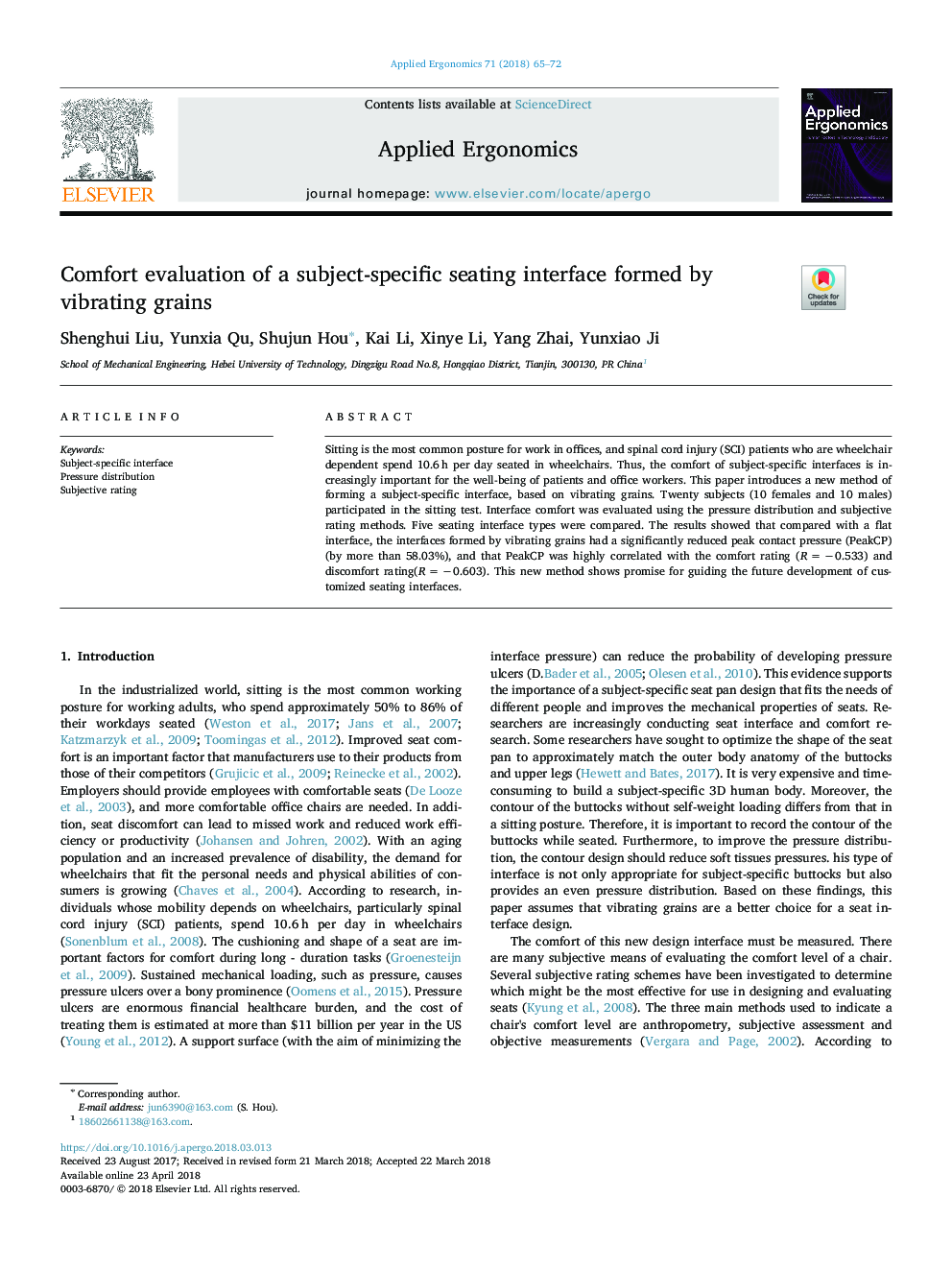| Article ID | Journal | Published Year | Pages | File Type |
|---|---|---|---|---|
| 6947582 | Applied Ergonomics | 2018 | 8 Pages |
Abstract
Sitting is the most common posture for work in offices, and spinal cord injury (SCI) patients who are wheelchair dependent spend 10.6â¯h per day seated in wheelchairs. Thus, the comfort of subject-specific interfaces is increasingly important for the well-being of patients and office workers. This paper introduces a new method of forming a subject-specific interface, based on vibrating grains. Twenty subjects (10 females and 10 males) participated in the sitting test. Interface comfort was evaluated using the pressure distribution and subjective rating methods. Five seating interface types were compared. The results showed that compared with a flat interface, the interfaces formed by vibrating grains had a significantly reduced peak contact pressure (PeakCP) (by more than 58.03%), and that PeakCP was highly correlated with the comfort rating (Râ¯=â¯â0.533) and discomfort rating(Râ¯=â¯â0.603). This new method shows promise for guiding the future development of customized seating interfaces.
Related Topics
Physical Sciences and Engineering
Computer Science
Human-Computer Interaction
Authors
Shenghui Liu, Yunxia Qu, Shujun Hou, Kai Li, Xinye Li, Yang Zhai, Yunxiao Ji,
